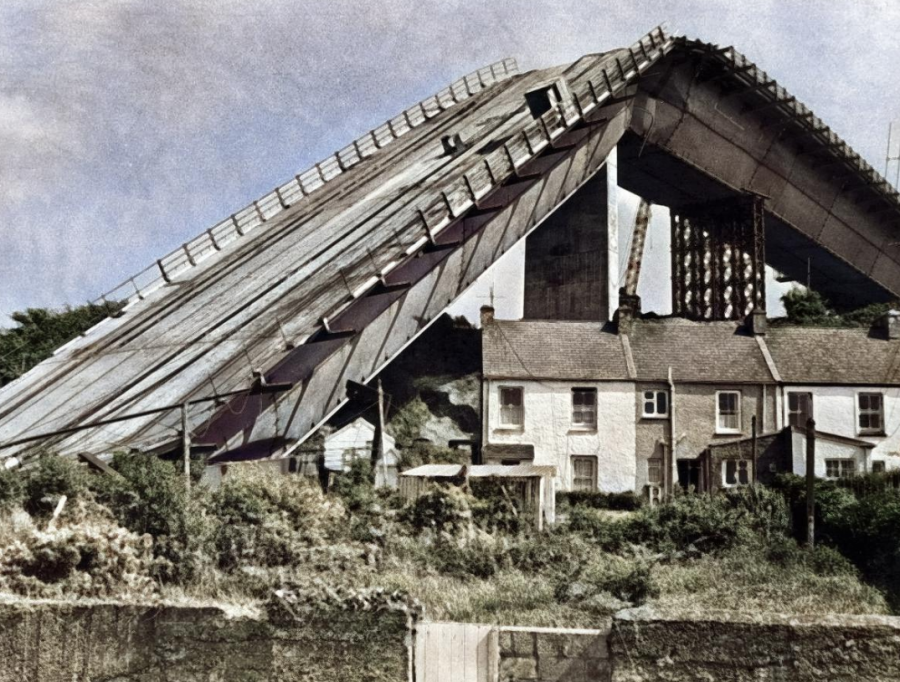TODAY, marks the 50th anniversary of the collapse of the Cleddau Bridge, then called the Milford Haven Bridge, a day that would change bridge building forever.
The construction of the bridge was a staple of a then booming economy, with the original project estimated to be around £2m, but the flawed design caused devastation.
On June 2, 1970, disaster struck the small village of Pembroke Ferry, when a 150 tonne section of the part-built Cleddau Bridge collapsed, killing four men and injuring another 5 people.
At 2.16pm BST, as a section of the bridge was lowered onto the supporting structure below, villagers reported hearing a groaning sound followed by an engulfing cloud of red dust.
The first officer on the scene was dad of two, PC Phil Lloyd, having just clocked into his shift at Pembroke Dock Station when the fire siren sounded.
Recalling the day, Phil, 74 said “I presumed it was just another chimney fire.”
Then at 2.20pm Phil received a call from his mother in law, she lived 30 metres below the bridge.
“When I went into the switchboard the fella said ‘your mother-in-law is on the phone’.”
“She shouted, ‘the bridge has come down!’ and i said ‘don’t be so dull’.”
PC Lloyd’s mother-in-law, Ivy Lewis, lived directly under the bridge, in Pembroke Ferry, on the south side of the river.
With the oil refineries, Milford Haven Port, all being developed in the county, the bridge was a much needed asset, which would give better accessibility and cut down the 20-mile round trip for vehicles.
Arriving at the scene, Phil described it as “utter pandemonium”.
At the time of the collapse, the local gas man was attending Mrs Lewis’ property. She originally assumed that he “had blown the house up”.
It was only when stepping into her garden could she fathom the true cause of the commotion. The whole section of the bridge was resting at a 45-degree angle in her garden.
Astonishly the bridge narrowly missed the below properties. Although it had completely demolished Phil’s aunties coal shed and outdoor toilet.
“Luckily there was a gap between her house and her sister’s house which is where the bridge came down.” Phil said.
“One man had been killed at the scene and two others were taken to hospital but died later. Then when the bridge was lifted, we found another man underneath.”
Construction of the box-section bridge was put on halt immediately.
Within 18 month’s bridges in Germany and Australia, both of the same ill-fated design collapsed with fatal consequences.
The cause of the collapse was later revealed that the diaphragm above the pier of the bridge had not been thick enough and buckled as the 230-foot section was cantilevered out.
Following an inquiry, a number of safety recommendations were made, which included the addition of 500ft of extra steel to strengthen the bridge.
In 1995, on the 25th anniversary of the disaster a memorial plaque to the four men who died, William Baxendale, George Hamilton, James Thompson and local man Evan Phillips.was unveiled.
Unfortunately the plaque was later stolen and has not yet been replaced.
The completed Cleddau Bridge reopened in 1975, making it the largest unsupported span in Europe although costs had escalated to £12m upon completion.
The disaster which shook the small village, laid the foundations for which a new standard was developed in the box girder bridge design.
The Cleddau collapse was regarded as the last major bridge disaster in the UK.

















